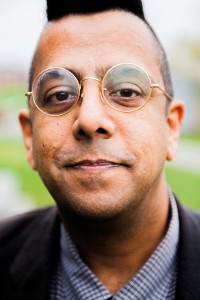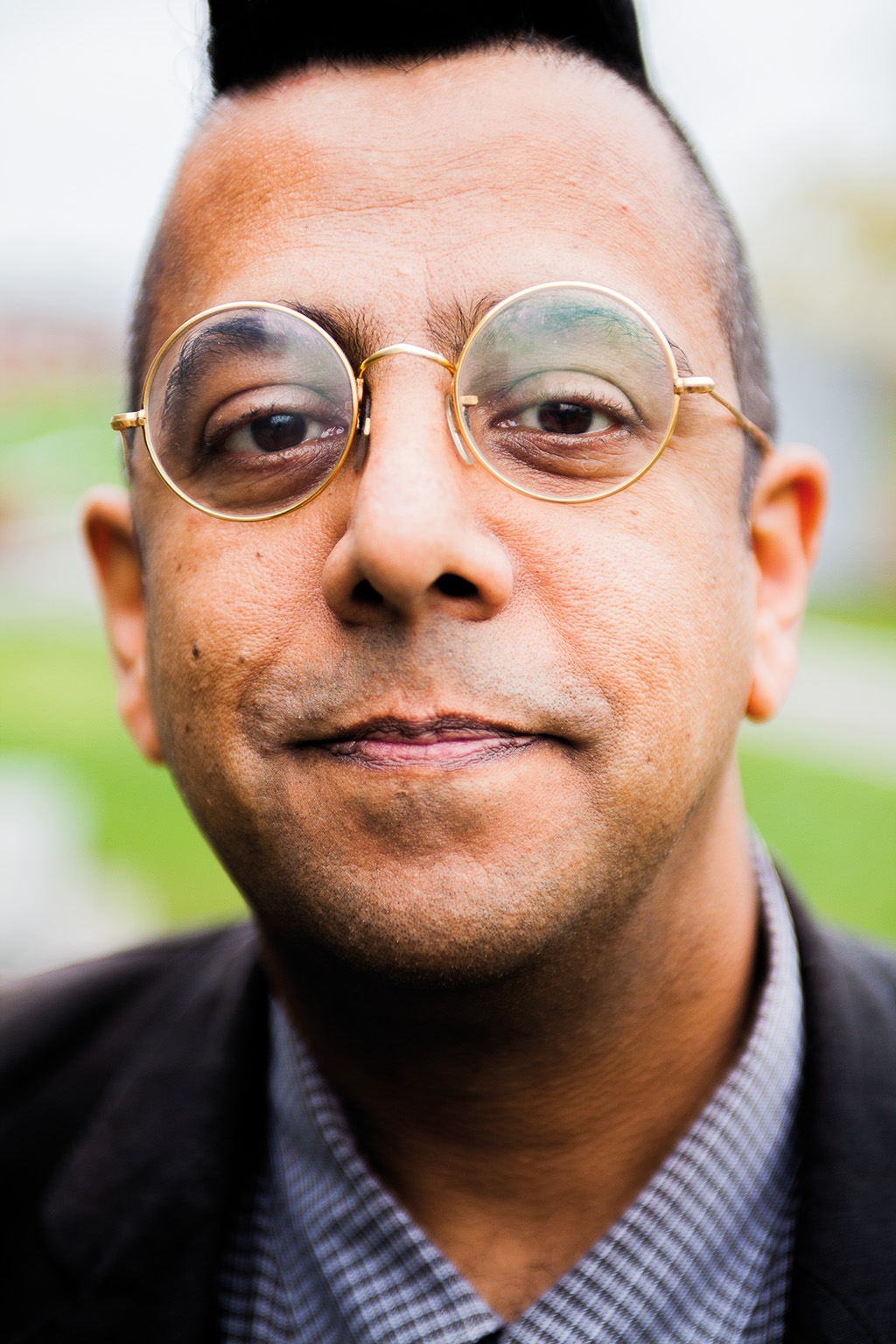Codes and mathematical theorems may not be the most coveted reading pleasure. However, despite despite the dull subject, Simon Singh’s books have been read and cherished by a large audience. Even by those who don’t even like numbers.

On a podium at the front of the lecture hall in Matteannexet, we find Simon Singh. He is wearing round, steel-rimmed glasses and his hair is buzz-cut on both sides of the head, long and a little bit straggly in the middle. His audience is 126 upper-secondary students who have one thing in common: They love math.
“It’s a wonderful opportunity. I’m happy if I can inspire them in their engagement for the subject,” he says.
Simon Singh is the physicist from England who changed careers and became a world-famous author of popular science. He writes about difficult topics but by mixing nerdy math with science and humour, and dramatic stories, he reaches even the ones who has the largest fear of numbers.
He even manages to reach the out-and-out literary critics’ hearts. a while ago, he was invited to SVT’s literary magazine Babel due to the release of his new book. The presenter, Jessica Gedin said that she, after one of his lectures, had become so moved that she crumpled to tears. What’s his secret? What makes Simon Singh’s mathematics so engaging and interesting?
Maths is not known to be students’ favourite subject, neither is coolness points known to be scored by being talented in the subject. But, in a world of unpopular math, Simon Singh highlights what’s hip. Maybe that is a characteristic of the time we are living in.
“I don’t think being a nerd is as uncool as it used to be. I’m thinking of how people speak of ‘nerd-pride’ and ‘geek-chick’. People like guys like Steve Jobs, because he changed the world,” he says.
“People who are geeks or nerds accomplish fantastic things. They come up with vaccines and technical solutions that move society forward.”
Simon himself had an interest in math early on and aimed high. In his parents’ shop in Great Britain, he got to practice adding numbers together in his head and that became the root for his interest. In his academic career, he continued with physics at university and did his PhD in particle physics. Then, he came to a grind halt.
“Basically, I was not good enough and would never be able to become a top scientist,” he says.
When his colleagues proved to be brighter geniuses in the world of scientists, the ambition to become the best disappeared. Instead, he didn’t really know where to turn.
“I started to think about what I like doing: I love teaching, talking about? natural science and I love TV. I thought that was a good place to start,” Simon Singh says.
He got a job in TV and that became the perfect niche. That’s where it turned out that he had a talent to tell stories and, above all, to make the seemingly boring subjects into something exciting and fascinating.
A short contract with the BBC became longer and longer and culminated in a documentary about Fermat’s last theorem. The story is about the mathematician Pierre Fermat who, in 1637, formulated an advanced mathematical theorem in the margins of his notebook.
Fermat wrote that he had an fantastic piece of evidence for his theorem, but that the margin was too narrow for it. During more than 350 years, mathematicians around the world sought to find the answer, and it was not until 1995 that the British mathematician Andrew Wiles managed to solve it, after several years of work. By that time, Simon Singh knew everything about the theorem and was well prepared to write a whole book about it.
The book became a bestseller, and no one was as surprised as Simon Singh himself.
“I couldn’t have imagined it appearing at the top-ten popular science literature list. Then, it climbed to number 1 of all literature. It was unimaginable, I was even doing it mostly because I thought it was fun,” he says.
After that, he wrote a new book called The Code Book, in which difficult codes and secret messages are mixed with true dramatic stories about war, love and death. The fascination for math results in the fact that he sees numbers everywhere. Most recently, he has written a book about how the TV-series ‘The Simpsons’ is full of advanced mathematical numbers and formulas.
In Matteannexet, the audience are enjoying themselves. Singh’s stories about The Simpsons attract laughter. But, even though math is present in their favourite TV-show, it’s not a matter of course that they want to study the subject. Many of the students have good grades in most subjects and aim to apply to study medicine instead.
When Simon Singh is asked what kind of concrete job opportunities mathematicians have he thinks it’s a strange question.
“Mention one job where math isn’t needed,” and he continues: “A mathematical mind can solve whatever you want. When you study math, it’s not just formulas and equations. It’s about learning to analyse and solve problems, focusing on what’s relevant, being rational, creative and to have a fixed purpose. All of this is applicable to anything,” he says.
Simon Singh never became the scientist who drove society forward. But, with enlightening entertainment he has found his place – to inspire and push other people to learn more about natural science, and to believe in their ideas, to become part of the solution for the future.
He is not visiting Matteannexet because of his academic knowledge, but to inspire. The person who invited him read Fermat’s Last Theorem when he was young. The book inspired him to continue studying to become a mathematician.
And there are more admirers in Lund. When the lecture is over and the rounds of applauds get going, the program coordinator hands him his copy of Fermat’s Last Theorem. He stumbles a little bit when he asks to get it signed and Simon Singh takes the copy with a smile.
“I love meeting people who have been inspired by my books, it’s amazing,” he says.
Text: Tove Nordén
Photo: Jens Hunt
Translation: Mia Söllwander
Simon Singh
- Age: 50 years old
- From: Wellington, Great Britain.
- Career: Author and doctor of particle science.
- Favourite number: 26 (“it’s the only positive integer between a square and a cube”).
- Currently: has written the book The Simpsons and Their Mathematical Secrets.






